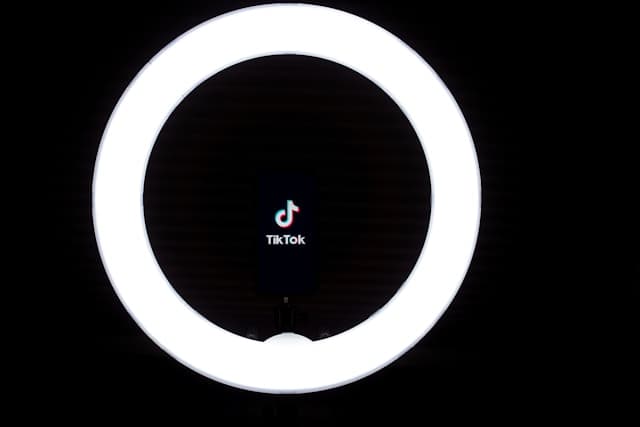Best Tips for Successful TikTok Influencer Collabs

Table of Contents
Planning Collaborations with Clarity
Effective collaborations begin with clarity. Learn how to effectively leverage TikTok collaborations for maximum impact. Before engaging influencers, brands must:
- Define campaign objectives: Are you aiming for visibility, engagement, or conversions?
- Set realistic budgets: Align your resources with the desired reach and complexity of the campaign.
Establishing these goals helps ensure both brand and influencer are aligned on what success looks like.
Selecting the Right Influencers
Choosing the right creators is one of the most crucial tips for TikTok influencer collabs. Brands should prioritize:
- Authenticity: Influencers who maintain a consistent, relatable voice earn deeper trust.
- Engagement metrics: Look beyond follower count—evaluate comments, shares, and repeat interactions.
- Shared values: Partnerships should feel natural, not forced.
Tools like BuzzSumo, AspireIQ, and Upfluence make it easier to identify influencers who align with campaign goals and brand identity. Get a detailed guide on the complete process of how to partner with TikTok influencers.
Exploring Collaboration Types
Depending on your objectives, different collaboration models may work best:
- Open Collaborations: These are broader and allow influencers to add their own interpretation.
- Target Collaborations: More focused and niche, these partnerships are tailored to specific demographics or messaging.
Both approaches can be powerful when aligned with clear KPIs.
Drafting Smart Contracts
Clear contracts are critical in every influencer relationship. They should include:
- Defined deliverables and content deadlines
- Payment terms and methods
- Ownership rights to content
- Approvals and content guidelines
- Clauses for exclusivity or conflicts of interest
Proper legal backing ensures everyone is protected and expectations are met.
Content That Feels Real
A major tip for successful TikTok influencer collaborations in 2025 is to avoid over-scripting. Let influencers:
- Use their own voice
- Adapt your brief to their content style
- Speak authentically to their audience
Providing general direction is useful—but too much control kills creativity and trust.
Executing Collaborations
Types of Collaborations
When brands engage with creators on TikTok, they typically choose between two main types of collaborations: Open Collaborations and Target Collaborations. Open Collaborations offer broader engagement, while Target Collaborations focus on specific goals or audience demographics, making them ideal for tailored influencer campaigns.
Building Relationships
Long-term influencer partnerships foster trust and loyalty, not just between brand and creator, but also within their respective communities. Brands in 2025 are prioritizing low-cost, performance-based partnerships and expanding their reach by working with a diverse pool of creators, especially those with niche audiences.
Content Strategy
A strong content strategy is essential for effective collaborations. Brands should define 3–5 content pillars that reflect their messaging and values while aligning with the influencer's style. This balance of branded and personal content helps maintain authenticity and keep audiences engaged.
Engagement Techniques
Brands can enhance interaction by:
- Responding to comments with video replies
- Participating in TikTok trends like duets and challenges
- Encouraging creators to ask questions or end videos with cliffhangers
These techniques foster community involvement and spark conversations around the brand.
Performance Metrics
To measure collaboration success, brands should track:
- Engagement rate (target: 5%+)
- Completion rate (target: 80%+)
- Share-to-view ratio
- Viewer return rate
These metrics offer insights into content resonance and campaign effectiveness, helping brands refine future strategies.
Measuring Success
KPIs to Track
Success in TikTok influencer marketing is determined by clearly defined KPIs. Top metrics include:
- Engagement rate: Likes, comments, and shares
- Website traffic: Driven from TikTok to landing pages
- Conversions: Purchases or signups from campaigns
- Follower growth: Both for brand and influencer
Analytics tools like Google Analytics, Sprout Social, and Hootsuite can provide detailed insights.
Challenges and Considerations

Authenticity and Trust
Audiences now demand genuine content, rejecting scripted promotions. Brands must ensure influencer messaging feels real and personal. This means allowing creative freedom while aligning the content with core values.
Influencer Selection
Nano and micro-influencers, with 1,000 to 50,000 followers, often offer deeper engagement and stronger trust. Brands should assess influencers based on:
- Audience alignment
- Engagement rates
- Content consistency
Legal Contracts
Robust contracts should include:
- Deliverables
- Deadlines
- Payment terms
- Content ownership
- Non-compete clauses
These terms protect both parties and ensure a smooth workflow throughout the partnership.
Content Consumption Trends
In 2025, attention spans are shorter. Brands must adapt by producing snackable, trend-driven content that naturally integrates product messaging without overwhelming the audience.
Sentiment and ROI
In addition to traditional ROI metrics, sentiment analysis (audience reactions and tone) plays a growing role in campaign evaluation. A high ROI with negative sentiment could hurt brand perception, so qualitative feedback is essential.
Future Trends in Influencer Collaborations
Strategic Long-Term Partnerships
Short-term campaigns are out; brands are now building ongoing relationships with creators, especially niche influencers who deliver consistent engagement. This shift builds trust and community loyalty, which is invaluable in 2025.
Transparency and Compliance
With tighter regulations, disclosing partnerships is mandatory. Creators must use #ad or #sponsored hashtags to maintain trust and comply with legal standards.
AI Integration
AI tools now:
- Recommend ideal influencers
- Analyze campaign performance
- Assist in content ideation
Leveraging AI allows brands to scale operations efficiently while maintaining content quality.
Engagement Over Reach
More brands are prioritizing engagement metrics over vanity metrics. Real conversations, repeat views, and audience loyalty now carry more weight than sheer follower counts.
Conclusion
By adapting to these trends and focusing on authentic, data-driven partnerships, brands can master TikTok influencer collaborations and connect meaningfully with their audiences in 2025.
To scale your influencer marketing campaigns and streamline engagement across platforms, explore ReplyPilot. This AI-powered tool helps brands manage real-time conversations, boost interaction quality, and build meaningful relationships with their audience—efficiently and authentically.







